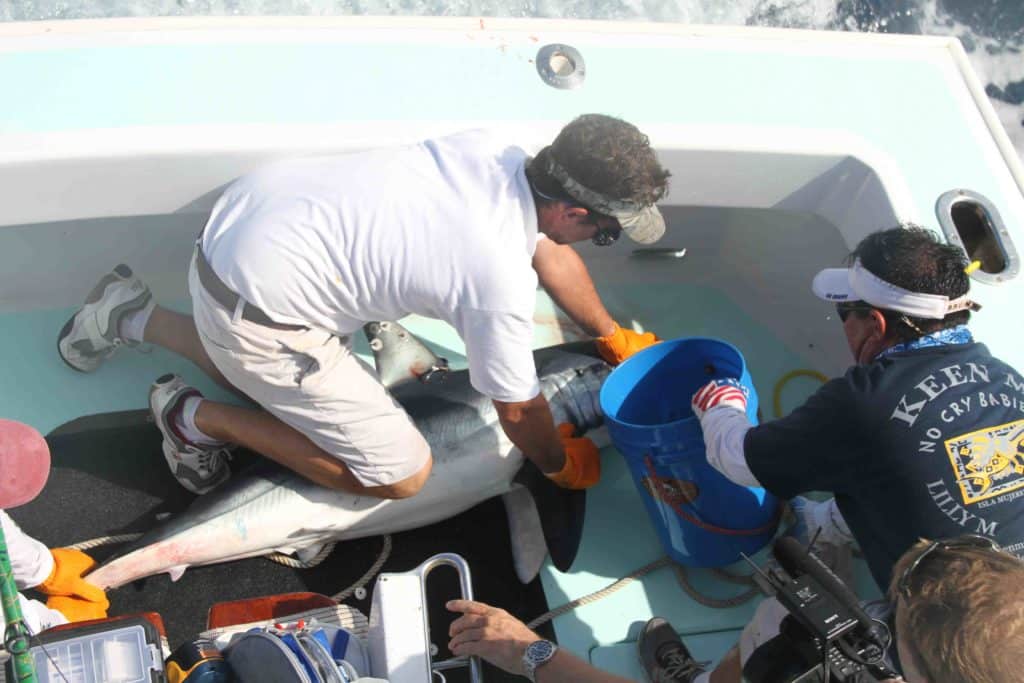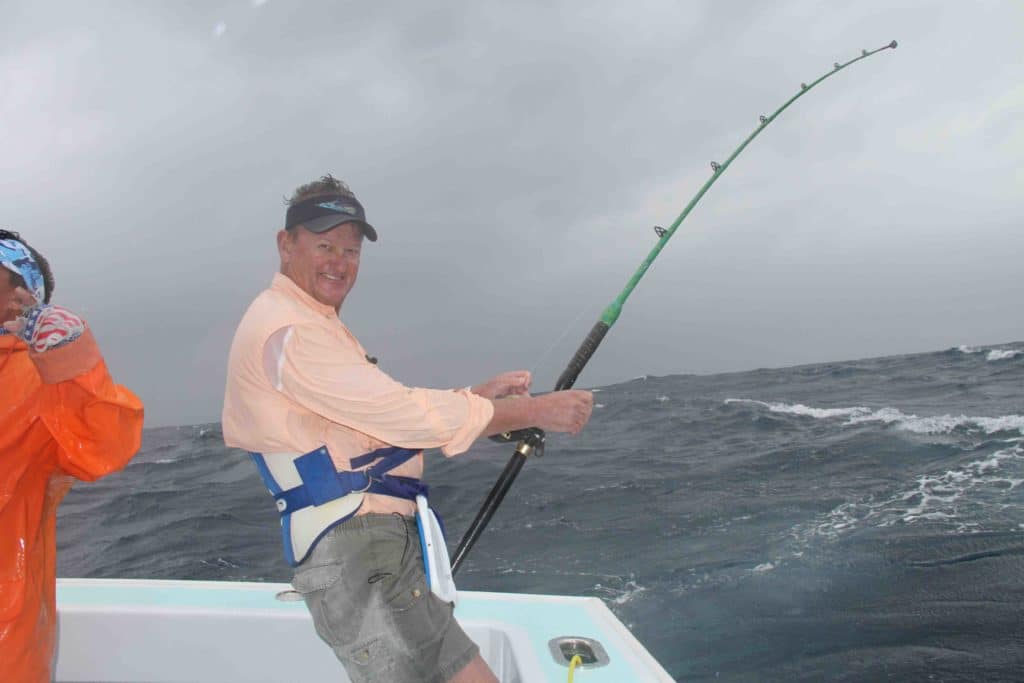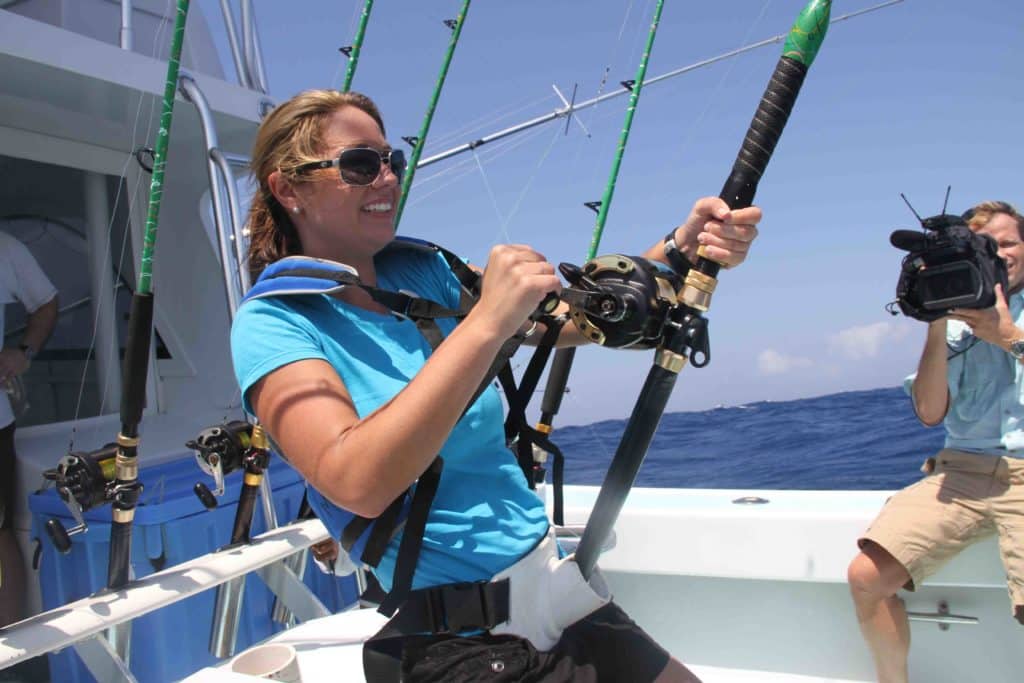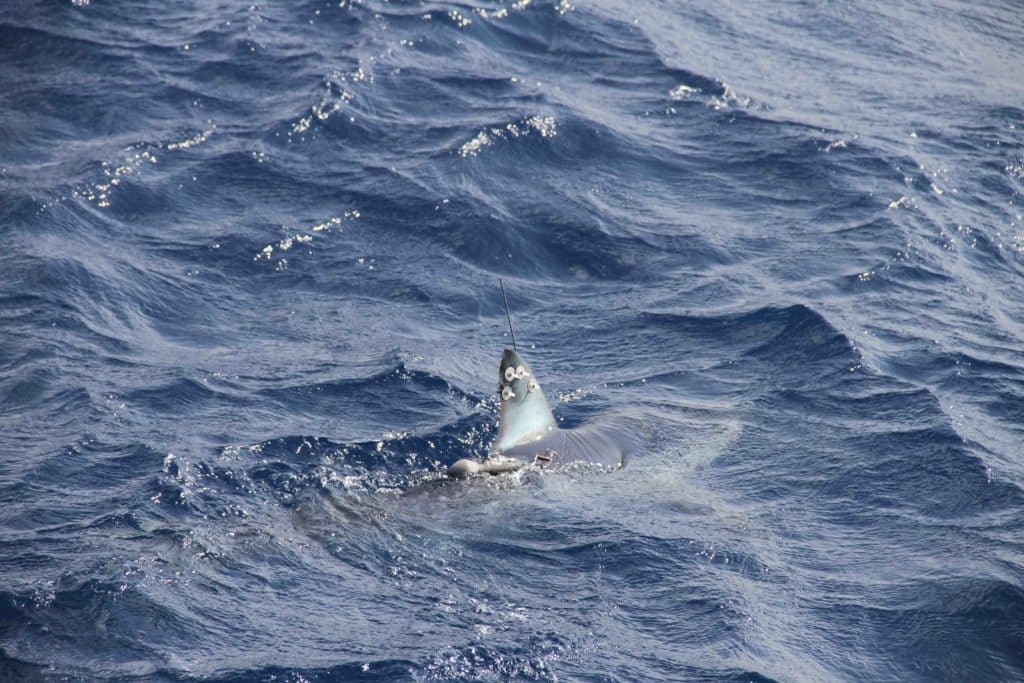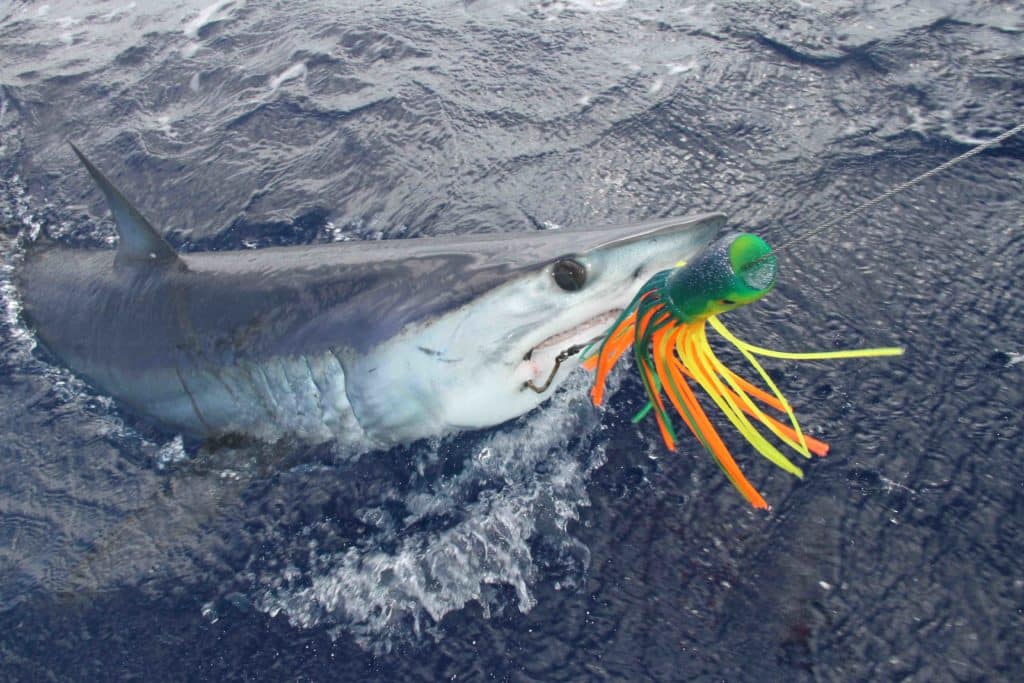
Don’t forget to click through all the images in the gallery above.
The tagging and tracking of shortfin mako sharks in late March off the coast of Isla Mujeres, Mexico is expected to provide scientists with remarkable and previously unknown details about the timing and long-distance migratory movements of this vulnerable species in the Atlantic Ocean.
An expedition headed by the Guy Harvey Research Institute (GHRI) at Nova Southeastern University, tagged mako sharks with the satellite reporting SPOT tags. Unlike the more commonly used pop-up satellite PAT tags, SPOT tags should provide multiple and more accurate daily detections, providing scientists with a high resolution view of the migration patterns of this animal.
Given the high fishing pressure on makos for their fins and meat, this species is showing declining population trends in parts of its range, which has resulted in the species being listed as “Vulnerable” on the IUCN Red List of threatened species.
Shark biologist Dr. Brad Wetherbee with GHRI and the University of Rhode Island, angler and WTVJ NBC 6 weather anchor Jennifer Reeves and Emmy Award winning producer/cameraman George Schellenger accompanied Dr. Harvey. The team worked with Captain Anthony Mendillo of Keen M International.
“We hope to replicate the tremendous success of our New Zealand research in the Atlantic,” said Dr. Harvey. ”Now we have a new group of Atlantic makos to follow which should reveal much new information on their seasonal movements in our part of the world, including the route that they take and distances traveled.”
See video from the most recent tagging event below:
Results from New Zealand
Last year a shortfin mako shark dubbed “Carol” in New Zealand was tagged with a SPOT tag and is showing an amazing journey that has covered nearly 9,500 miles over ten months, averaging 60 miles per day during some parts of her migration. GHRI collaborated with the New Zealand National Institute of Water an Atmospheric Research (NIWA) on the tagging of “Carol” and three other mako sharks off New Zealand.
“The public interest in GHRI’s shark movement research has been amazingly strong,” said Dr. Shivji, who reported that the New Zealand online mako satellite-tracking site has received nearly 73,000 unique visitors over the last seven months, equating to an average of over 10,000 unique visitors per month.
**About the Guy Harvey Research Institute at NSU **
Established in 1999, the Guy Harvey Research Institute (GHRI) at NSU is collaboration between the renowned marine artist, scientist and explorer, Dr. Guy Harvey, and Nova Southeastern University’s Oceanographic Center. The mission of the GHRI is to provide the scientific information necessary to understand, conserve, and effectively manage the world’s marine fishes and their ecosystems. The GHRI is one of only a handful of private organizations dedicated exclusively to the science-based conservation of marine fish populations and biodiversity. The research, education and outreach activities of the GHRI are supported by the Guy Harvey Ocean Foundation, AFTCO Inc., extramural research grants, philanthropic donations by private businesses and individuals, and NSU.
**About Guy Harvey Ocean Foundation **
The Guy Harvey Ocean Foundation is a leader in international efforts to protect our oceans and marine environments. The GHOF advocates for sustainable fishing practices, funds inspired scientific research and supports innovative educational programs. Our principle objective is to help ensure that future generations will enjoy and benefit from a naturally balanced ocean ecosystem where fish and other marine wildlife flourish. GHOF has led or assisted include the establishment of a shark sanctuary in Bahamian federal waters, the addition of five species of sharks to Florida’s protected list and the enactment of the U.S. Billfish Conservation Act. In the fall of 2012, the GHOF led a petition drive in support of the National Conservation Law in the Cayman Islands. The GHOF also assisted the launch of the first catch-and-release fishing tournament in Venezuela.

